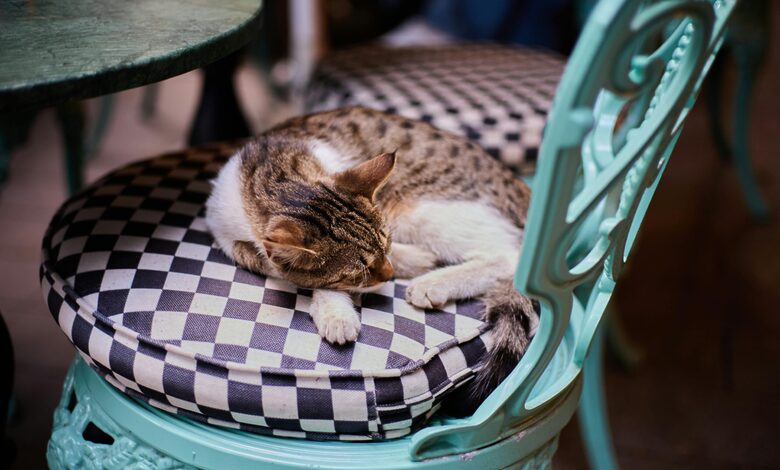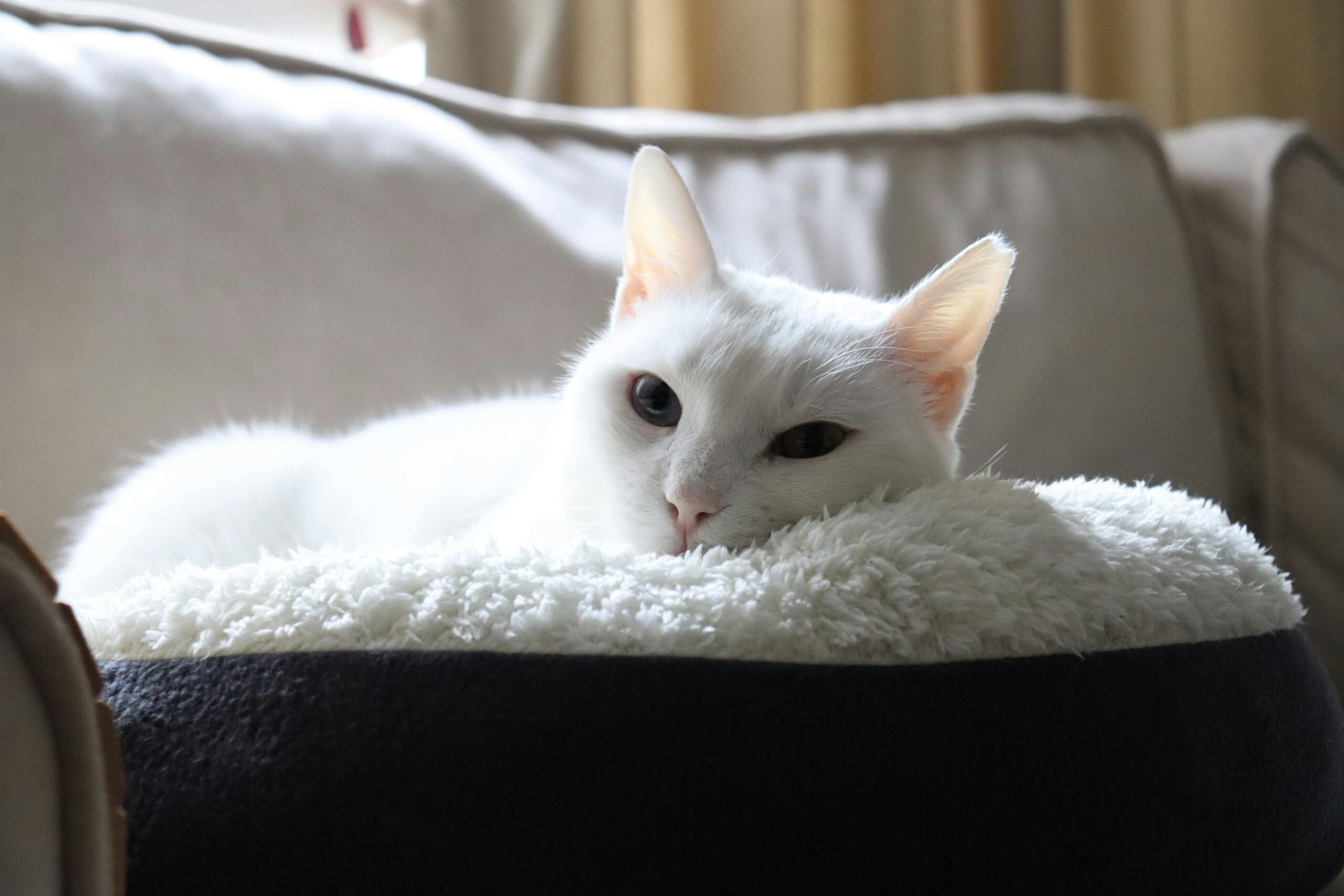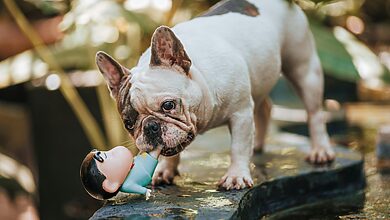Cat Anxiety and Stress Management: The Complete 2025 Guide to Calming Your Feline Friend

Your beloved cat is pacing restlessly around the house. They’re hiding under the bed more than usual. Maybe they’ve started avoiding their litter box or scratching furniture excessively.
These behaviors often signal something pet parents frequently overlook: feline anxiety and stress.
Unlike dogs who wear their emotions openly, cats mask their distress behind seemingly aloof behavior. This makes recognizing and addressing cat anxiety particularly challenging for even the most devoted pet owners.
Research from the American Veterinary Medical Association shows that over 40% of cats experience anxiety-related behaviors. Yet most pet parents don’t recognize the signs until problems become severe.
This comprehensive guide will transform how you understand and manage your cat’s emotional wellbeing. You’ll discover proven strategies used by veterinary behaviorists nationwide.
Table of contents
- Understanding Cat Anxiety: More Complex Than You Think
- Recognizing the Hidden Signs of Feline Stress
- Common Triggers: What Stresses Cats Most
- Creating a Calming Environment: Your Cat’s Safe Haven
- Behavioral Interventions: Proven Techniques for Anxiety Relief
- Natural Remedies: Gentle Solutions for Anxious Cats
- When to Seek Professional Help: Recognizing Serious Situations
- Long-Term Stress Prevention: Building Resilience
- Building Stronger Bonds: Supporting Your Anxious Cat
- Frequently Asked Questions About Cat Anxiety
Understanding Cat Anxiety: More Complex Than You Think
Cat anxiety manifests differently than human stress responses. While we might feel overwhelmed or worried, cats experience anxiety as a survival mechanism gone haywire.
Feline stress responses evolved from wild ancestors who faced constant predatory threats. Modern house cats retain these same neurological pathways. Even minor changes can trigger intense anxiety responses.
The feline brain processes stress through the amygdala. This almond-shaped region controls fear responses. In anxious cats, this area becomes hyperactive. It interprets normal household activities as potential threats.
Primary Types of Cat Anxiety
Situational Anxiety occurs during specific events. Moving day, vet visits, or holiday gatherings commonly trigger this type. Cats typically recover once the situation passes.
Generalized Anxiety represents persistent, ongoing worry. These cats live in a constant state of hypervigilance. They struggle to relax even in familiar environments.
Separation Anxiety develops when cats become overly attached to specific family members. These felines experience distress when left alone, even briefly.
Social Anxiety affects cats who fear interactions with people or other animals. This often stems from inadequate socialization during kittenhood.
Recognizing the Hidden Signs of Feline Stress
Most cat parents miss early anxiety symptoms. Cats instinctively hide vulnerability to avoid appearing weak to predators.
Understanding subtle stress signals helps you intervene before problems escalate.
Physical Symptoms
Changes in Eating Habits represent one of the earliest anxiety indicators. Stressed cats often stop eating entirely or become food-obsessed. Both patterns signal emotional distress.
Excessive Grooming creates bald patches or raw skin areas. Anxious cats use grooming as a self-soothing mechanism. However, this behavior can become compulsive and harmful.
Digestive Issues including vomiting, diarrhea, or constipation frequently accompany chronic stress. The gut-brain connection in cats is particularly sensitive to emotional states.
Respiratory Changes such as rapid breathing or panting (rare in cats) indicate severe anxiety. These symptoms require immediate veterinary attention.
Behavioral Changes
Litter Box Avoidance ranks among the most common anxiety-related behaviors. Stressed cats may associate their litter box with negative feelings or fear interruption while vulnerable.
Hiding Behaviors increase during stressful periods. While some hiding is normal, persistent concealment suggests ongoing anxiety.
Aggression or Withdrawal can alternate in anxious cats. Some become defensive and irritable. Others retreat completely from social interaction.
Vocalization Changes including excessive meowing, yowling, or complete silence indicate emotional distress. Each cat’s baseline vocal patterns help identify concerning changes.
Destructive Behaviors such as inappropriate scratching or chewing often represent redirected anxiety energy. These behaviors help cats release pent-up stress.
Common Triggers: What Stresses Cats Most
Understanding specific anxiety triggers helps you create a more supportive environment for your feline friend.
Environmental Stressors
Household Changes disrupt cats’ need for predictability. New furniture, rearranged rooms, or different daily schedules can trigger significant anxiety. Cats thrive on routine and familiar surroundings.
New Family Members including babies, partners, or additional pets challenge established territories. Cats need time to adjust to sharing their space and resources.
Loud Noises from construction, fireworks, or thunderstorms activate cats’ startle responses. Their sensitive hearing makes them particularly vulnerable to sound-related stress.
Lack of Vertical Space creates anxiety in multi-pet households. Cats need elevated areas to feel secure and survey their territory safely.
Social Stressors
Forced Interactions with unfamiliar people or animals overwhelming shy cats. Respecting their need for gradual introductions prevents traumatic experiences.
Punishment-Based Training destroys trust and increases anxiety. Cats respond poorly to confrontational training methods that create fear-based responses.
Inconsistent Handling from different family members confuses cats. Establishing consistent interaction rules helps maintain their sense of security.
Health-Related Stressors
Undiagnosed Pain often masquerades as behavioral problems. Arthritis, dental disease, or internal conditions create ongoing discomfort that manifests as anxiety.
Sensory Decline in senior cats increases anxiety levels. Vision or hearing loss makes familiar environments feel threatening and unpredictable.
Medication Side Effects can alter mood and behavior patterns. Some treatments for other conditions inadvertently increase anxiety symptoms.
Creating a Calming Environment: Your Cat’s Safe Haven
Environmental management forms the foundation of effective anxiety treatment. Small changes can produce significant improvements in your cat’s emotional state.
Designing Stress-Free Spaces
Vertical Territory satisfies cats’ natural climbing instincts. Install cat trees, shelving, or perches near windows. Height provides security and environmental control.
Hiding Places offer essential retreat options. Provide boxes, cat caves, or quiet corners where your cat can decompress without interruption.
Multiple Resource Stations prevent competition and reduce territorial stress. Place food, water, and litter boxes in different areas throughout your home.
Consistent Daily Routines create predictability that anxious cats crave. Feed meals, play sessions, and bedtime at regular intervals.
Optimizing Physical Comfort
Temperature Control affects feline stress levels. Cats prefer temperatures between 68-78°F. Provide warm resting spots during winter and cooling options in summer.
Lighting Management should accommodate cats’ crepuscular nature. Dim lighting during dawn and dusk hours supports natural behavior patterns.
Noise Reduction creates a more peaceful environment. Use soft furnishings, white noise machines, or calming music designed specifically for cats.
Scent Management involves eliminating stressful odors while incorporating calming ones. Clean thoroughly with enzymatic cleaners and introduce familiar scents gradually.
Behavioral Interventions: Proven Techniques for Anxiety Relief
Behavior modification addresses the root causes of anxiety rather than just managing symptoms. These evidence-based approaches help cats develop better coping mechanisms.
Systematic Desensitization
This technique gradually exposes cats to anxiety triggers at manageable intensity levels. Start with the mildest version of the trigger. Reward calm behavior with treats or play.
Slowly increase intensity over multiple sessions. Never force exposure or move too quickly. This process requires patience but produces lasting results.
For example, if your cat fears car rides, start by simply sitting near the stationary car. Progress to sitting inside with the engine off. Eventually work up to short drives.
Counter-Conditioning
This approach changes your cat’s emotional response to triggers. Instead of feeling anxious, they learn to associate triggers with positive experiences.
Pair trigger exposure with highly valued rewards. Use special treats, favorite toys, or engaging play sessions. The goal is creating positive associations that override fear responses.
Timing is crucial for success. Present rewards immediately when triggers appear. Consistency across all family members enhances effectiveness.
Environmental Enrichment
Mental and physical stimulation reduces anxiety by providing appropriate outlets for natural behaviors.
Interactive Toys challenge cognitive abilities while releasing physical energy. Puzzle feeders slow eating while engaging problem-solving skills.
Hunting Games satisfy predatory instincts safely. Use feather wands, laser pointers, or motorized toys to simulate prey behavior.
Scratching Opportunities must accommodate individual preferences. Provide various textures, angles, and locations to meet different needs.

Natural Remedies: Gentle Solutions for Anxious Cats
Many pet parents prefer natural approaches before considering pharmaceutical interventions. These gentle methods can provide significant relief for mild to moderate anxiety.
Aromatherapy and Pheromones
Synthetic Pheromones mimic calming scents mother cats produce. Feliway diffusers or sprays help reduce general anxiety levels. These products work best in conjunction with behavioral modifications.
Cat-Safe Essential Oils can create calming atmospheres. Lavender and chamomile offer mild sedative effects. Always dilute properly and ensure adequate ventilation.
Never apply essential oils directly to cats or use in concentrated forms. Their sensitive respiratory systems can be overwhelmed by strong scents.
Herbal Supplements
Chamomile provides gentle anxiety relief without sedation. This herb reduces nervous tension while maintaining normal activity levels.
Valerian Root offers stronger calming effects for severely anxious cats. Start with small doses to assess individual tolerance.
L-Theanine promotes relaxation without drowsiness. This amino acid supports healthy neurotransmitter function.
Always consult your veterinarian before starting any supplement regimen. Some herbs interact with medications or aren’t appropriate for cats with certain health conditions.
Nutritional Support
Omega-3 Fatty Acids support brain health and reduce inflammation associated with chronic stress. Fish oil supplements specifically formulated for cats provide optimal ratios.
Tryptophan serves as a precursor to serotonin, the brain’s “happiness chemical.” Some commercial cat foods contain added tryptophan for emotional support.
Probiotics support gut health, which directly influences mood and anxiety levels. A healthy microbiome contributes to emotional stability.
When to Seek Professional Help: Recognizing Serious Situations
While many anxiety cases respond to environmental and behavioral interventions, some situations require professional veterinary care.
Red Flag Symptoms
Complete Loss of Appetite for more than 24 hours represents a medical emergency. Cats can develop hepatic lipidosis rapidly without food intake.
Elimination Outside Litter Box combined with other anxiety symptoms may indicate underlying medical conditions requiring diagnosis and treatment.
Self-Harm Behaviors such as excessive scratching until bleeding or compulsive fur pulling need immediate professional attention.
Aggressive Outbursts toward family members or other pets create safety concerns that require expert behavioral guidance.
Working with Veterinary Behaviorists
Board-Certified Specialists have advanced training in animal behavior modification. They develop comprehensive treatment plans combining medical and behavioral approaches.
Medication Consultation may be necessary for severe anxiety cases. Anti-anxiety medications can provide relief while behavioral modifications take effect.
Progress Monitoring ensures treatment effectiveness and allows for plan adjustments as needed.
Long-Term Stress Prevention: Building Resilience
Prevention strategies help cats develop emotional resilience and reduce future anxiety episodes.
Early Socialization
Kitten Socialization during the critical period (2-7 weeks) shapes lifetime behavioral patterns. Proper exposure to various people, animals, and experiences builds confidence.
Adult Cat Integration requires patience and gradual introductions. Never rush the process or force interactions.
Ongoing Environmental Management
Routine Maintenance keeps stress levels consistently low. Regular cleaning, consistent schedules, and predictable interactions support emotional stability.
Enrichment Rotation prevents boredom and maintains interest. Regularly introduce new toys, rearrange furniture slightly, or add novel experiences gradually.
Health Monitoring catches problems early before they impact emotional wellbeing. Regular veterinary checkups identify issues that could contribute to anxiety.
Building Stronger Bonds: Supporting Your Anxious Cat
Your relationship with your cat significantly influences their anxiety levels. Understanding feline communication and respecting their boundaries builds trust and security.
Recognizing Communication Signals
Body Language tells you more than vocalizations. Tail position, ear orientation, and posture reveal emotional states.
Respecting Boundaries when cats signal discomfort prevents negative associations. Never force interactions when cats show avoidance behaviors.
Positive Interactions should always be cat-initiated. Allow them to approach you rather than pursuing them for attention.
Creating Trust-Building Opportunities
Consistent Care Routines demonstrate reliability. Feed, play, and interact with your cat at regular times each day.
Gentle Handling during necessary procedures builds positive associations. Gradually increase handling tolerance through patient conditioning.
Shared Activities like synchronized sleeping or parallel play strengthen bonds without overwhelming sensitive cats.
Frequently Asked Questions About Cat Anxiety
Q: How long does it take to see improvement in anxious cats? A: Mild anxiety often improves within 2-4 weeks of consistent intervention. Severe cases may require 3-6 months or longer. Every cat responds differently to treatment approaches.
Q: Can multiple cats in a household have different anxiety levels? A: Absolutely. Individual personalities, experiences, and genetics influence anxiety susceptibility. Some cats may remain calm while others in the same environment become stressed.
Q: Do indoor cats experience less anxiety than outdoor cats? A: Indoor cats face different stressors than outdoor cats. While protected from predators and traffic, they may experience anxiety from confinement or lack of environmental stimulation.
Q: Is it normal for senior cats to develop new anxiety behaviors? A: Age-related changes including cognitive decline, sensory loss, and health issues can trigger new anxiety patterns. Senior cats often benefit from modified environmental management.
Q: Can cat anxiety affect their physical health? A: Chronic stress suppresses immune function, disrupts digestion, and contributes to various health problems. Managing anxiety helps maintain overall physical wellbeing.
Q: How do I know if my cat’s anxiety requires medication? A: Consult your veterinarian if behavioral interventions don’t provide adequate relief after 6-8 weeks, if anxiety severely impacts quality of life, or if dangerous behaviors develop.
Q: Can cats recover completely from anxiety disorders? A: Many cats show significant improvement with appropriate treatment. While some may always be more sensitive, most can learn to cope effectively with proper support.
Q: Do certain cat breeds experience more anxiety than others? A: Some breeds like Siamese, Abyssinian, and Russian Blues may be more prone to anxiety. However, individual personality and experiences matter more than breed tendencies.
Q: How can I help my cat during thunderstorms or fireworks? A: Create a safe space away from windows, use white noise or calming music, maintain normal routines, and consider anxiety wraps or pheromone diffusers for additional support.
Q: Should I get a second cat to help with my anxious cat’s loneliness? A: Additional cats can either help or worsen anxiety depending on your cat’s personality. Some benefit from feline companionship while others prefer being the only pet.
Your cat’s emotional wellbeing deserves the same attention as their physical health. Anxiety doesn’t have to diminish their quality of life or your relationship together.
With patience, understanding, and consistent application of these proven strategies, most anxious cats can learn to feel safe and secure in their homes.
Remember that every cat is unique. What works for one may not work for another. Stay observant, remain flexible in your approach, and don’t hesitate to seek professional help when needed.
The investment you make in understanding and addressing your cat’s anxiety will be repaid with years of deeper trust, stronger bonding, and a happier, healthier feline companion.






